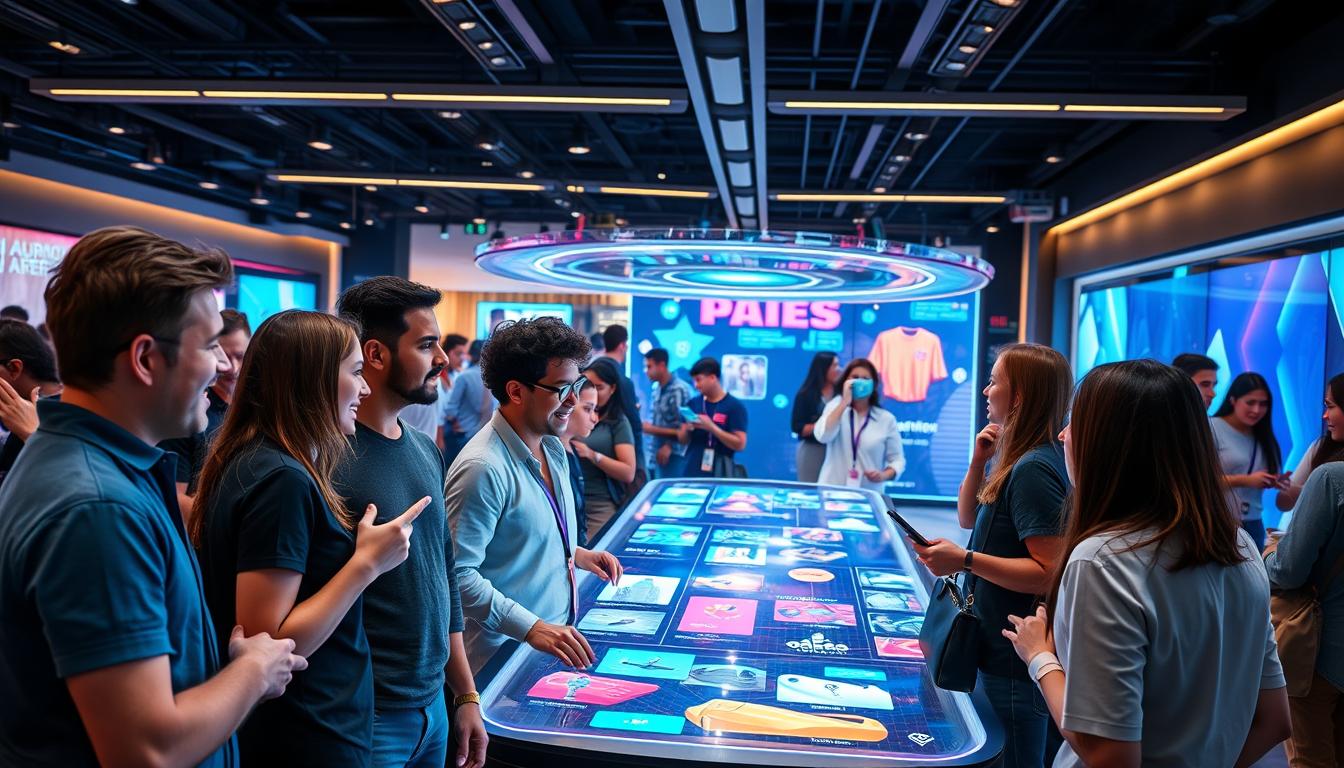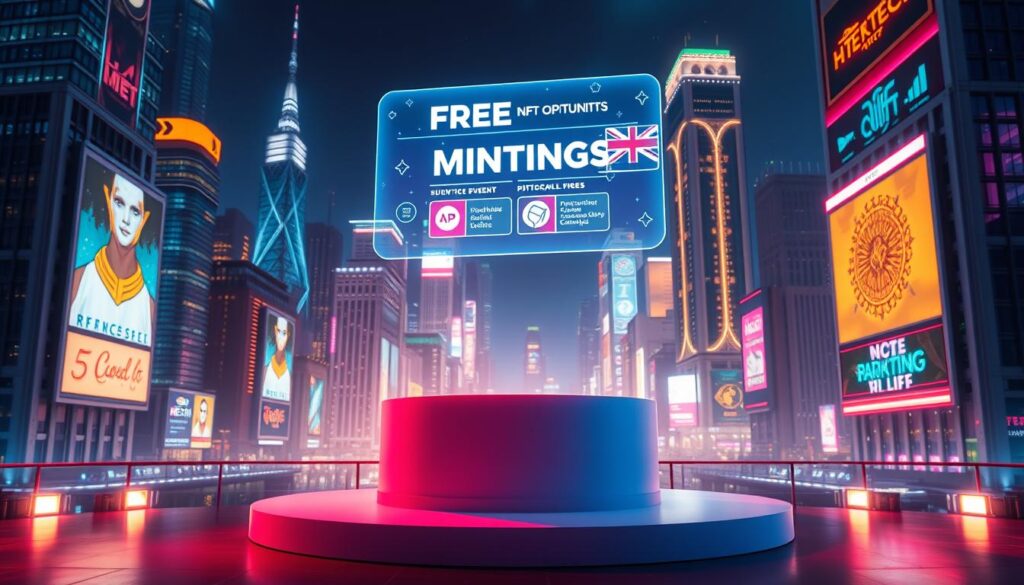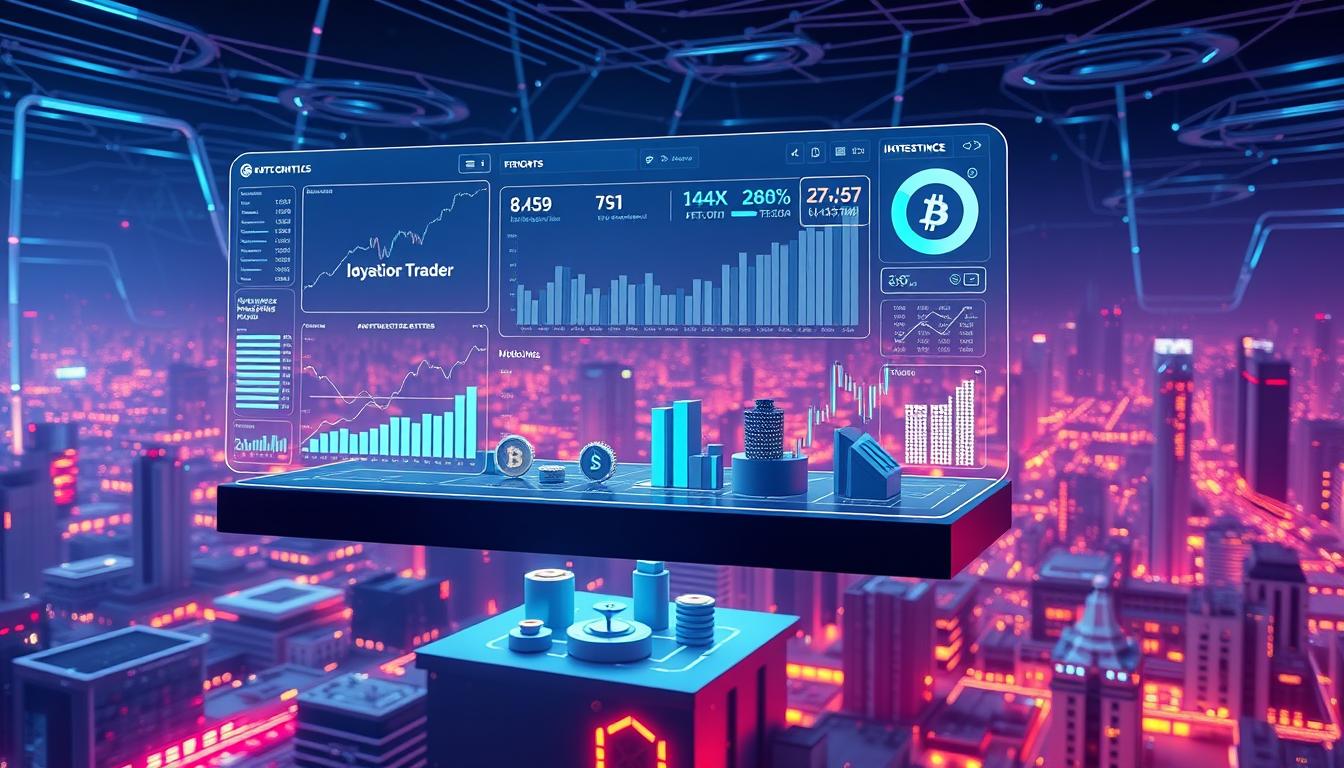Now Reading: Earn NFT Rewards Through Community Engagement Effectively
- 01
Earn NFT Rewards Through Community Engagement Effectively
Earn NFT Rewards Through Community Engagement Effectively

The digital landscape is transforming how businesses connect with their audiences. Traditional loyalty programs with generic points and discounts no longer capture modern consumer attention. Companies now seek innovative ways to build genuine relationships.
The non-fungible token market reached $22 billion in 2021. It continues growing at 34.5% annually through 2030. This explosive growth demonstrates the potential for modern reward systems. Digital collectibles are evolving from niche items to mainstream assets.
These new systems create emotional connections beyond transactional incentives. They transform passive customers into active stakeholders. Participants truly own their digital assets and can trade or display them across platforms. This approach fosters sustained participation and brand loyalty.
Key Takeaways
- Traditional loyalty programs struggle to maintain modern consumer interest
- The NFT market shows massive growth potential for business applications
- Digital collectibles create deeper emotional connections with audiences
- Participants gain true ownership of their rewards across multiple platforms
- This approach transforms customers into active brand stakeholders
- Entertainment and gaming industries lead adoption of these systems
- Businesses must adapt to changing customer engagement expectations
Understanding the NFT Landscape and Its Impact on Loyalty Programs
A fundamental shift in digital ownership concepts is transforming traditional customer incentive models. Businesses now recognize the limitations of conventional programs that offer temporary benefits.
Defining NFTs and Their Unique Features
Non-fungible tokens represent unique digital items on blockchain networks. Each token provides verifiable proof of ownership for specific assets.
These cryptographic tokens cannot be duplicated or replaced. Their scarcity and permanent transaction history create lasting value.
Unlike interchangeable cryptocurrencies, each non-fungible token is distinct. This uniqueness makes them ideal for representing exclusive digital collectibles.
Evolution of Digital Loyalty Rewards
Customer incentive programs have evolved significantly over time. Early systems used physical punch cards and basic point accumulation.
Digital platforms introduced online point systems. However, these still suffered from expiration dates and limited transferability.
Modern programs leverage blockchain technology to create truly owned assets. Participants gain control over their digital collectibles.
| Feature | Traditional Loyalty | NFT-Based Programs | Impact on Customer Experience |
|---|---|---|---|
| Ownership | Brand-controlled points | User-owned tokens | Increased perceived value |
| Transferability | Restricted or impossible | Fully transferable assets | Greater flexibility |
| Expiration | Common with time limits | Permanent ownership | Long-term engagement |
| Verification | Centralized systems | Blockchain transparency | Enhanced trust |
| Market Value | Fixed redemption value | Potential appreciation | Added incentive |
The $22 billion market for these digital assets demonstrates growing acceptance. Early adopters across industries validate this approach.
Strategies to Earn NFT Rewards Through Community Engagement
Building a dedicated following requires innovative approaches that recognize and value member contributions. Effective programs turn casual users into active stakeholders.
These systems offer digital collectibles for various actions. This creates a deeper connection than traditional points.

Practical Tips for Community-Centric Engagement
Focus on sustained involvement rather than one-time actions. Programs often use tiered systems.
Basic tokens welcome newcomers. Rare digital assets recognize superfans. Completing challenges or collecting sets unlocks unique benefits.
Another powerful method is the burn-to-redeem mechanic. Participants exchange tokens for exclusive experiences or VIP access.
Leveraging Social Platforms for NFT Distribution
Brands distribute these digital incentives across popular channels. Active involvement on platforms like Twitter and Discord is key.
Sharing content, joining discussions, and attending virtual events can yield valuable tokens. This approach helps build interconnected networks.
A successful program discussion often highlights how multi-channel participation compounds benefits. It creates a cycle where activity is recognized and motivates further involvement.
| Program Type | Core Mechanism | Best For |
|---|---|---|
| Membership-Based | Acts as a digital access pass | Building exclusive member groups |
| Event-Based | Rewards participation in campaigns | Driving specific campaign goals |
| Collection-Based | Encourages completing themed sets | Fostering long-term collection habits |
| Burn-to-Redeem | Tokens exchanged for real-world perks | Creating tangible, exclusive experiences |
The Role of Blockchain Technology and Smart Contracts in NFT Loyalty
Behind every successful digital collectible program lies a sophisticated technological framework built on decentralized networks. This foundation ensures that every digital asset remains unique and verifiable. The system creates trust through transparent record-keeping.
How Blockchain Ensures Security and Transparency
Blockchain technology operates as a distributed ledger across multiple computers. Each transaction receives validation from network participants. This process prevents unauthorized changes to records.
Every digital collectible carries a unique identifier on the blockchain. Ownership history remains permanently visible to all users. This transparency builds confidence in the system’s integrity.

Security features include cryptographic protection and consensus mechanisms. Multiple nodes must approve each new entry. This approach eliminates single points of failure.
Smart Contracts: Automating Reward Distribution
Smart contracts represent self-executing programs stored on the blockchain. They automatically trigger when participants meet specific conditions. This automation ensures consistent and fair distribution.
These digital contracts remove the need for manual processing. They execute predetermined rules without human intervention. The system provides instant verification of completed actions.
| Feature | Traditional System | Blockchain Approach | User Benefit |
|---|---|---|---|
| Validation | Central authority | Network consensus | Enhanced trust |
| Record Keeping | Company databases | Distributed ledger | Permanent history |
| Automation | Manual processing | Smart contracts | Instant fulfillment |
| Transparency | Limited visibility | Public verification | Independent audit |
Blockchain technology enables interoperability between different platforms. Digital assets can move across participating ecosystems. This flexibility increases the utility of collected items.
Benefits of Replacing Traditional Loyalty Programs with NFT-Based Rewards
Companies implementing digital collectible programs consistently report enhanced customer relationships and brand loyalty. These modern systems offer substantial advantages over conventional points-based approaches.

Enhanced Flexibility and Unique Incentives
Digital asset programs provide true ownership to participants. Unlike traditional systems with expiration dates, users control their tokens completely.
Each token carries unique characteristics and scarcity. This creates collectible value that generic points cannot match. The individuality makes every reward special.
Blockchain technology enables instant updates and transparent tracking. Both brands and customers see real-time program status. This immediacy enhances the experience.
Successful NFT loyalty rewards programs demonstrate cross-platform compatibility. Tokens can work across multiple brands and ecosystems. This interoperability increases utility.
| Feature | Traditional Programs | Digital Asset Programs | Customer Impact |
|---|---|---|---|
| Ownership Control | Brand-managed points | User-owned assets | Greater autonomy |
| Transferability | Usually restricted | Fully transferable | Increased flexibility |
| Value Potential | Fixed redemption | Market appreciation | Added incentive |
| Security | Centralized databases | Blockchain verification | Enhanced trust |
Younger demographics particularly appreciate these digital systems. Generation Z and Millennials show strong preference for virtual expressions. This makes the approach highly effective for modern audiences.
Designing an Effective NFT Loyalty Program
The foundation of any effective token-based incentive system lies in thoughtful design and strategic implementation. A well-structured program combines clear value propositions with engaging mechanics that motivate sustained participation.

Planning Reward Structures and Tiers
Successful programs often use tiered systems that recognize different levels of participation. Basic tiers welcome newcomers with accessible digital collectibles.
Advanced tiers unlock premium tokens for dedicated participants. This progression system creates clear goals and measurable advancement.
Popular structure options include:
- Point conversion systems where traditional points become unique digital assets
- Value-based programs connecting tokens to charitable causes or brand values
- Paid membership models offering exclusive benefits for premium access
Integrating Gamification and Digital Collectibles
Game mechanics transform routine interactions into engaging experiences. Quests and challenges reward users with rare tokens for completing specific actions.
Achievement systems recognize milestones with special badges. Dynamic tokens can evolve based on customer behavior, creating personalized rewards.
These features make participation feel like an adventure rather than a transaction. For comprehensive guidance, explore this brand program strategy that details implementation steps.
Key Components of a Successful NFT Rewards Strategy
Several key factors separate thriving token reward systems from unsuccessful attempts. Programs that gain traction focus on user experience rather than technical complexity.
Diverse incentive structures appeal to different customer motivations. Some users prefer digital collectibles while others value exclusive access.
Flexible payment options accommodate various comfort levels. Both cryptocurrency and traditional methods prevent exclusion.
Building Community Through User-Centric Features
Security measures build essential trust in the system. Multi-factor authentication and encryption protect digital assets.
User-friendly interfaces make participation effortless for everyone. Clear navigation and mobile optimization are crucial.
Community features transform programs into social ecosystems. Members interact, share experiences, and develop connections.
| Component | Implementation | User Benefit | Business Impact |
|---|---|---|---|
| Reward Diversity | Multiple token types and experiences | Personalized value | Broader appeal |
| Payment Flexibility | Crypto and traditional options | Accessibility | Wider adoption |
| Security Framework | Encryption and authentication | Asset protection | Trust building |
| Interface Design | Intuitive navigation | Easy participation | Higher retention |
| Community Tools | Social features and events | Connection | Loyalty growth |
Data analytics help businesses understand user behavior. This information guides program improvements.
Marketplace functionality adds real-world value to digital assets. Trading and selling increase token utility.
Gamification elements make participation more engaging. Challenges and achievements motivate continued involvement.
Leveraging Digital Assets and NFT Marketplaces for Brand Engagement
Strategic platform decisions determine the scalability, cost structure, and user experience of token-based programs. Brands must evaluate both blockchain infrastructure and marketplace partnerships carefully.
Selecting the Right Blockchain and Marketplace
Ethereum remains the most established blockchain with robust smart contract capabilities. Its Proof-of-Stake consensus offers moderate scalability but variable transaction fees.
Alternative platforms provide distinct advantages. Solana delivers exceptional speed with 65,000 transactions per second. Polygon serves as an efficient Ethereum Layer 2 solution.
Tezos emphasizes energy efficiency through Liquid Proof-of-Stake. BNB Chain offers fast transactions with lower costs. Each platform suits different program requirements.
Marketplace selection requires equal consideration. OpenSea provides the largest user base and multi-chain support. Rarible features decentralized governance through its RARI token.
Specialized platforms serve specific audiences. SuperRare focuses on curated high-quality digital art. Foundation maintains an artist-centric approach for creative collaborations.
Key selection criteria include blockchain compatibility and user base size. Supported token types and marketplace fees significantly impact program economics. Features like gasless minting differentiate platforms.
These decisions create lasting implications for program flexibility. The right combination maximizes exposure while controlling costs. Strategic partnerships extend brand reach beyond owned channels.
Implementing NFT Loyalty Programs: Tools and Best Practices
Launching a token-based incentive system involves strategic decisions that impact long-term program success. Businesses must approach this development process with clear objectives and proper tools.
Step-by-Step Guide to Launching Your Program
Begin by defining measurable goals for your digital asset initiative. Clear objectives guide every aspect of the development process.
Understand your audience segments thoroughly. Different user groups require tailored approaches and onboarding experiences.
Blockchain selection impacts transaction costs and scalability. Evaluate platforms based on your specific business needs and technical requirements.
Token design should reflect brand identity while offering real utility. Limited editions create scarcity that enhances perceived value.
| Implementation Approach | Best For | Technical Complexity | Time to Launch |
|---|---|---|---|
| Full Custom Development | Large enterprises with specific needs | High | 3-6 months |
| Platform-as-a-Service | Mid-size businesses seeking speed | Medium | 4-8 weeks |
| Template-Based Solutions | Small businesses and startups | Low | 2-4 weeks |
| Hybrid Approach | Businesses with existing systems | Variable | Custom timeline |
Smart contracts automate reward distribution while ensuring transparency. Proper testing prevents technical issues during launch.
Track performance metrics from day one. Data-driven insights help optimize your loyalty strategy over time.
Addressing Implementation Challenges and Enhancing User Onboarding
User accessibility remains the primary challenge when transitioning from traditional to blockchain-based incentive systems. Many potential participants face technical barriers that can discourage participation.
Simplifying Wallet Setup and Security Management
Wallet setup presents the first major hurdle for new users. Businesses can partner with wallet-as-a-service providers to simplify this process.
These solutions offer user-friendly interfaces that hide technical complexity. Custodial options eliminate private key management burdens.
Payment flexibility is crucial for broad adoption. Companies should offer multiple transaction options to accommodate different user preferences.
Credit card payments through fiat on-ramp solutions appeal to mainstream customers. Cryptocurrency options serve blockchain-savvy users effectively.
Security management requires clear communication about protection measures. Multi-factor authentication and encryption protocols build user confidence.
Educational resources help users understand the technology behind their digital assets. Step-by-step tutorials and video guides support smooth onboarding.
Successful programs prioritize user experience over technical sophistication. The goal is engagement, not showcasing blockchain capabilities.
Evolving Trends and Future Predictions in NFT Loyalty Programs
Major platforms are now embedding digital asset functionality directly into their core services. This integration creates seamless experiences for users across familiar environments.
Instagram, Shopify, and Reddit lead this movement with built-in wallet creation. Their tools make digital collectibles accessible to mainstream audiences.
Emerging Technologies and Cross-Platform Integration
Cross-brand partnerships are forming interconnected loyalty ecosystems. Airlines, hotels, and retailers create shared value for token holders.
These coalitions amplify utility across multiple brands. Customers enjoy expanded benefits from their digital collections.
| Feature | Traditional Loyalty | Evolving Programs | User Advantage |
|---|---|---|---|
| Platform Integration | Standalone systems | Native platform features | Seamless experience |
| Interoperability | Brand-specific only | Cross-ecosystem utility | Expanded value |
| Token Dynamics | Static rewards | Evolving assets | Ongoing engagement |
| Governance | Company-controlled | Holder participation | Voice in direction |
How Dynamic Digital Assets are Shaping Customer Relationships
Dynamic tokens change based on user behavior and time held. They evolve from basic to premium versions through continued interaction.
Artificial intelligence personalizes these experiences further. AI analyzes patterns to deliver custom designs and curated perks.
Governance structures allow holders to vote on program decisions. This participation transforms customers into active co-creators.
The loyalty sector expects strong growth through 2030. These innovations will become standard practice across industries.
Conclusion
Forward-thinking companies are discovering that digital assets create unprecedented opportunities for customer retention. These innovative loyalty systems represent more than just technological upgrades—they fundamentally reshape how brands connect with their audiences.
The advantages are clear: true ownership, transferable value, and cross-platform utility. While implementation requires careful planning, the solutions available today make adoption accessible for businesses of all sizes.
This approach builds lasting relationships rather than temporary transactions. As digital rewards become mainstream, early adopters gain significant competitive advantage. The future of customer engagement is here, offering a powerful way to build authentic community connections.
FAQ
What are the main benefits of using digital assets for a loyalty program?
Using digital assets like non-fungible tokens offers unique incentives, such as true ownership and transferability. This approach provides enhanced flexibility compared to traditional points systems. Holders can trade or sell their assets on various marketplaces, adding real-world value.
How do smart contracts improve the distribution of perks?
Smart contracts automate the entire process, ensuring transparency and security. They execute transactions automatically when users meet specific criteria, eliminating manual work and reducing fees. This technology guarantees that rewards are distributed fairly and instantly.
What should a business consider when designing a token-based strategy?
Businesses should focus on building a strong community and planning clear reward structures. Integrating gamification elements and user-centric features is crucial. Selecting the right blockchain platform and ensuring a simple onboarding process are also key steps for success.
Are there transaction costs associated with these platforms?
Yes, most blockchain networks involve transaction fees, often called gas fees. These costs vary depending on network congestion and the platform chosen. Some businesses absorb these fees as part of their customer engagement strategy to improve the user experience.
How can brands leverage marketplaces for better engagement?
Brands can use established NFT marketplaces like OpenSea or Rarible to showcase their digital collectibles. This provides users with easy access to trade assets, increasing participation. It also amplifies brand visibility and creates a secondary market for rewards.
What role does governance play in these programs?
Governance allows token holders to participate in decision-making, fostering a deeper sense of community. This can include voting on future benefits, new features, or partnership options. It transforms users into active stakeholders, strengthening long-term loyalty.















